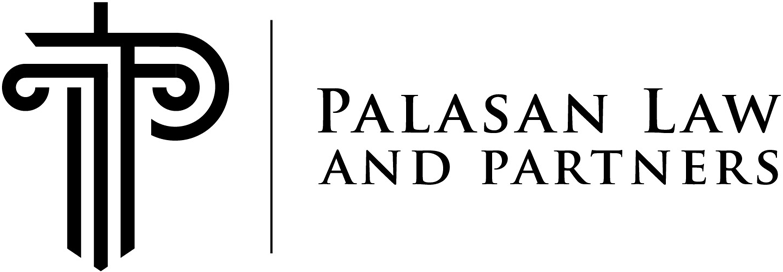There is a different standard in determining a minor’s culpability for crimes, hence the need for guidelines to streamline the discernment determination process for crimes involving children in conflict with the law.
Thus ruled the Supreme Court En Banc, in a Decision penned by Associate Justice Rodil V. Zalameda, as it denied the petition for review on certiorari assailing the rulings of the Court of Appeals (CA) and the Regional Trial Court (RTC) finding petitioner CICL XXX guilty of homicide.
The following guidelines were laid down by the Court:
- Discernment is the capacity of the child at the time of the commission of the offense to understand the difference between right and wrong and the consequences of the wrongful act.
- The task of ascertaining discernment is done preliminarily by a social worker, and finally by the court. The determination shall take into account the ability of a child to understand the moral and psychological components of criminal responsibility and the consequences of the wrongful act; and whether a child can be held responsible for essentially antisocial behavior. The social worker’s assessment is merely evidentiary and is not binding upon the court. Ultimately, the court finally determines discernment, based on its own appreciation of all the facts and circumstances in each
- There is no presumption that a minor acts with discernment. The prosecution must specifically prove as a separate circumstance that the alleged crime was committed with discernment. For a minor at such an age to be criminally liable, the prosecution is burdened to prove beyond reasonable doubt, by direct or circumstantial evidence, that he or she acted with discernment.
- In determining discernment, courts shall consider the totality of facts and circumstances in each case, such as: (i) the very appearance, the very attitude, the very comportment and behavior of said minor, not only before and during the commission of the act, but also after and even during trial, (ii) the gruesome nature of the crime, (iii) the minor’s cunning and shrewdness, (iv) the utterances of the minor, (v) the minor’s overt acts before, during and after the commission of the crime, (vi) the nature of the weapon used, (vii) the minor’s attempt to silence a witness, and (viii) the disposal of evidence or hiding of the corpus delicti.
The guidelines were issued by the Court in its resolution of whether CICL XXX’s conviction for homicide should be upheld.
CICL XXX, then 17 years old, was charged with homicide before the RTC for the death of AAA.
The prosecution established that AAA testified against CICL XXX in 2003 during the hearing of the complaint for physical injuries filed by DDD, AAA’s friend, against CICL XXX before the Punong Barangay. AAA testified that he saw CICL XXX hit DDD with a bucket inside a bar in Baguio City.
The next day, AAA’s parents found him lying in front of their gate, his face and eyes bloodied. AAA told them that CICL XXX struck his eyes. At the hospital, it was revealed that AAA had massive cerebral contusions and bleeding on spaces in the brain which may have been caused by any force or object hard enough to cause damage to the brain.
AAA was later discharged from the hospital in a vegetative state. After being bedridden for five years, AAA died on November 26, 2008.
On February 28, 2014, the RTC found CICL XXX guilty of homicide. His conviction was upheld by the CA, prompting the present petition.
The Court affirmed the findings of the lower courts that CICL XXX authored the deadly attack against AAA, and that the proximate cause for the latter’s death was the injury caused by CICL XXX. Thus, the elements of homicide were present.
However, due to the minority of CICL XXX at the time of the commission of the crime, the Court must apply Section 6 of Republic Act No. (RA) 9344, or the Juvenile Justice and Welfare Act of 2006, which provides the minimum age of criminal responsibility.
Under the said provision, a child above 15 years old but below 18 years of age shall be exempt from criminal liability and be subjected to an intervention program, unless he or she acted with discernment, in which case the child shall be subjected to the appropriate proceedings.
The Court must thus resolve whether CICL XXX acted with discernment in the commission of the crime.
Consistent with the guidelines, the Court held that the totality of the facts and circumstances lead to the conclusion that CICL XXX acted with discernment.
The Court found that CICL XXX mauled AAA with a blunt object which is hard enough to break a skull or shake a brain. This was supported by the brain injuries suffered by AAA. The location of the wounds and deliberateness of their infliction further demonstrate CICL XXX’s discernment.
The circumstances also show CICL XXX’s cunning and shrewdness. He perpetrated the attack early in the morning, at around 3:00 A.M., while accompanied by a companion. They waited for AAA to get home and after striking him, they escaped before any witnesses could see them.
Further, CICL XXX’s attack against the victim can be considered as an attempt to silence the latter or an act of retaliation for testifying against him in a separate mauling incident during the barangay proceedings.
CICL XXX’s own testimony also reveals his awareness that his actions were wrong. He dropped out of school because he was scared after he received a warning that he should watch his back.
Finally, at or near the time of the incident, CICL XXX was a second-year Nursing student. Thus, his level of education shows that he had the capacity to discern that inflicting bodily harm upon AAA was wrong, and it would likely result in his death.
“Ultimately, a careful consideration of all facts and circumstances, particularly the gruesome nature of the attack, the chosen time and place, the attempt to silence the victim who previously acted as a witness, and his very behavior and level of education, indicates that he acted with discernment. As gleaned from these facts, he committed the crime with an understanding of its depravity and consequences. Thus, CICL XXX is criminally liable for his act,” the Court concluded.
On the penalty, the Court cited Section 38 of RA 9344 which allows for the suspension of the sentence of minors notwithstanding said child reaching the age of majority at the time the judgment of conviction was pronounced. The Court, however, reiterated its ruling in the 2014 case of Hubilla v. People that the sentence of the offender may only be suspended until he or she is 21 years old in accordance with Section 40 of the law. Therefore, this is no longer applicable in CICL XXX’s case.
The Court remanded the case to the court of origin for its appropriate action in accordance with Section 51 of RA 9344 and People v. Jacinto providing that a child in conflict with the law may, after conviction and upon order of the court, regardless of the age at the time of the promulgation of the judgment of conviction, be made to serve his or her sentence, in lieu of confinement in a regular penal institution, in an agricultural camp and other training facilities that may be established, maintained, supervised and controlled by the Bureau of Corrections, in coordination with the Department of Social Welfare and Development. (Courtesy of the Supreme Court Public Information Office)
FULL TEXT of G.R. No. 238798 at: https://sc.judiciary.gov.ph/238798-cicl-xxx-vs-people-of-the-philippines/
Full text of the Concurring Opinion of Chief Justice Alexander G. Gesmundo at: https://sc.judiciary.gov.ph/238798-concurring-opinion-chief-justice-alexander-g-gesmundo/
Full text of the Concurring and Dissenting Opinion of Senior Associate Justice Marvic M.V.F. Leonen at: https://sc.judiciary.gov.ph/238798-concurring-and-dissenting-opinion-saj-marvic-m-v-f-leonen/
Full text of the Dissenting Opinion of Justice Alfredo Benjamin S. Caguioa at: https://sc.judiciary.gov.ph/238798-dissenting-opinion-justice-alfredo-benjamin-s-caguioa/
Full text of the Concurring and Dissenting Opinion of Justice Ramon Paul L. Hernando at: https://sc.judiciary.gov.ph/238798-concurring-and-dissenting-opinion-justice-ramon-paul-l-hernando/
Full text of the Dissent of Justice Amy C. Lazaro-Javier at: https://sc.judiciary.gov.ph/238798-dissent-justice-amy-c-lazaro-javier/
Full text of the Concurring Opinion of Justice Henri Jean Paul B. Inting at: https://sc.judiciary.gov.ph/238798-concurring-opinion-justice-henri-jean-paul-b-inting/
Full text of the Dissenting Opinion of Justice Mario V. Lopez at: https://sc.judiciary.gov.ph/238798-dissenting-opinion-justice-mario-v-lopez/
Full text of the Dissenting Opinion of Justice Samuel H. Gaerlan at: https://sc.judiciary.gov.ph/238798-dissenting-opinion-justice-samuel-h-gaerlan/
Full text of the Concurring Opinion of Justice Jhosep Y. Lopez at: https://sc.judiciary.gov.ph/238798-concurring-opinion-justice-jhosep-y-lopez/
Full text of the Concurring and Dissenting Opinion of Justice Antonio T. Kho, Jr. at: https://sc.judiciary.gov.ph/238798-concurring-and-dissenting-opinion-justice-antonio-t-kho-jr/

